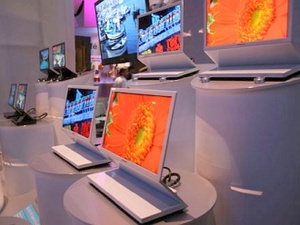 At the Consumer Electronics Show (CES), Sony Corp. is showing off one of the potential candidates to replace both LCD and Plasma display technology. A lot of media attention has been given to organic-light-emitting-diode (OLED) display technology in recent years, and for good reason. The technology offers lower power consumption at a time when the world is more conscious of energy consumption than ever, and a much brighter picture.
At the Consumer Electronics Show (CES), Sony Corp. is showing off one of the potential candidates to replace both LCD and Plasma display technology. A lot of media attention has been given to organic-light-emitting-diode (OLED) display technology in recent years, and for good reason. The technology offers lower power consumption at a time when the world is more conscious of energy consumption than ever, and a much brighter picture.
Sony is to start selling an 11-inch OLED display immediately for about $2000, quite a bit more than you'd expect to pay for a much larger screen using a rival technology. It is just 3mm thick, and Sony is actually currently developing flexible OLED displays but that is still in the lab stages. "You are going to see us do bigger sizes down the road. It is a new technology that is going to take several years before it competes with plasma and LCD," Sony Electronics President Stan Glasgow said.
Glasgow also claimed that Sony has not yet been affected by the economic woes in the United States. Technology shares are being impacted by woes that a slowdown will impact the performance of the biggest players in the industry.
If you are interested in other OLED developments, check out Samsung's offerings at CES.
Source:
Reuters











